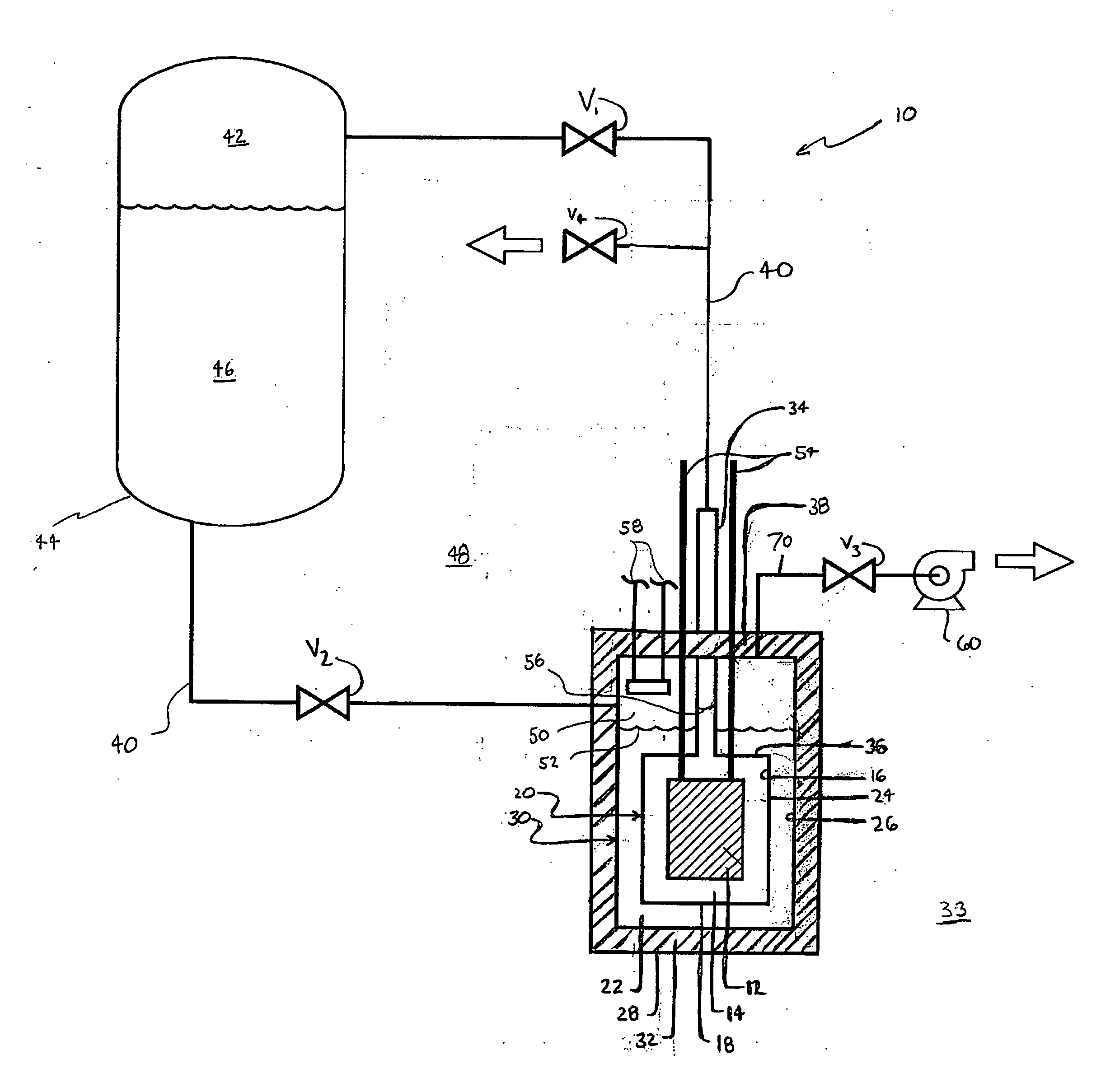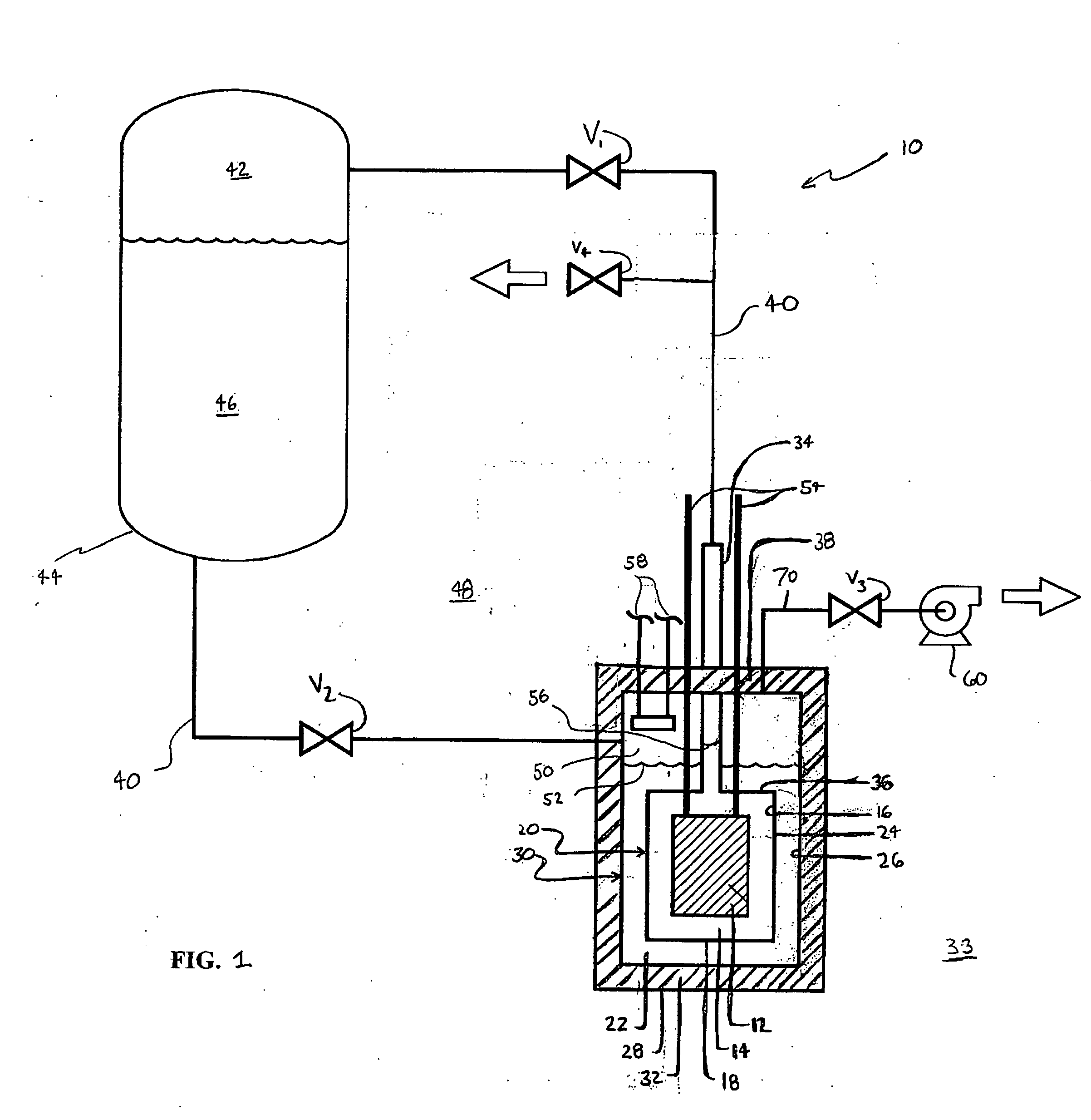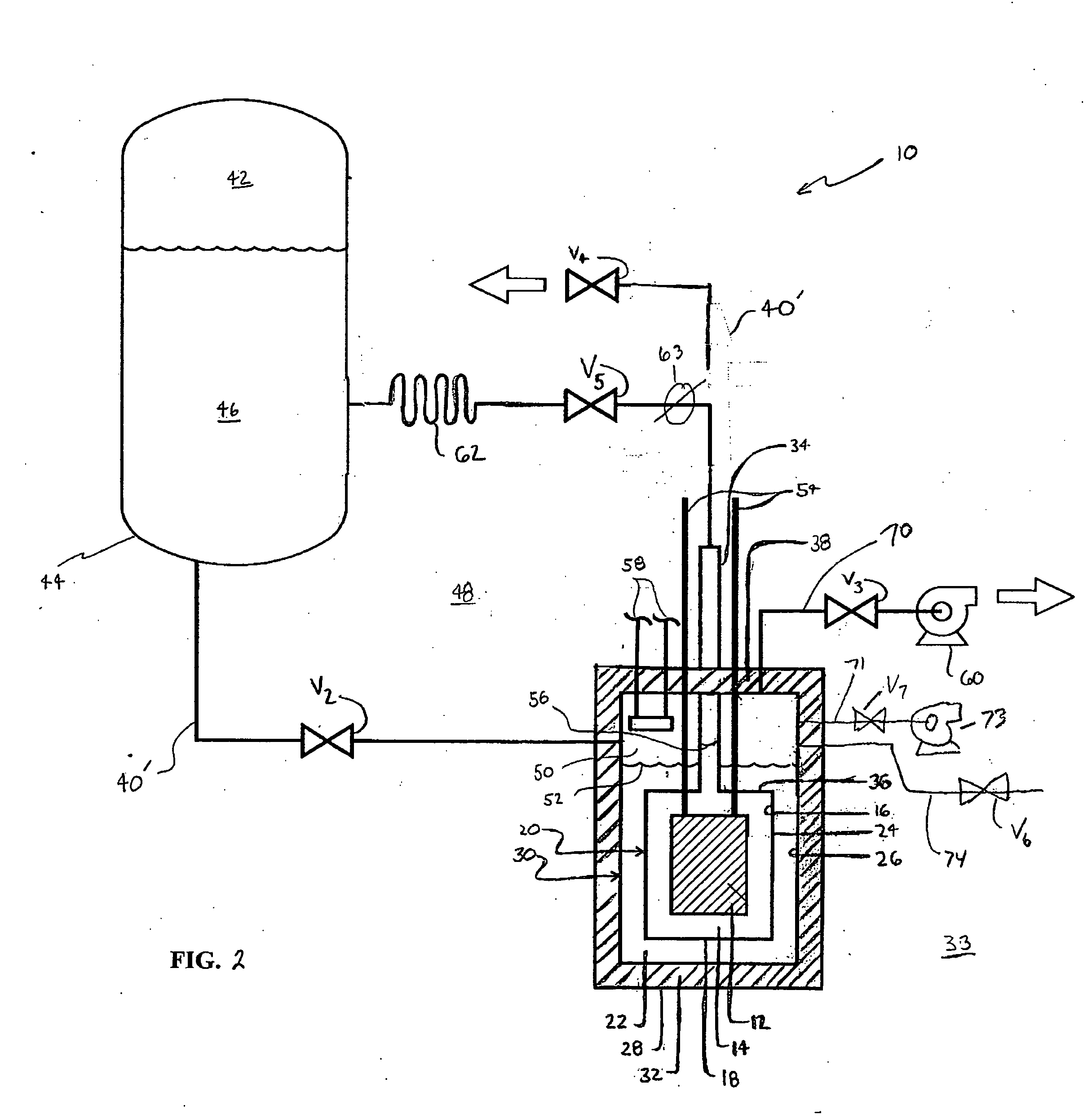Multi-bath apparatus and method for cooling superconductors
a superconductors and multi-bath technology, applied in the field of superconductors, can solve the problems of difficult maintenance, less than quick and efficient restoration of superconducting state, and sudden increase in impedance of superconducting fcl
- Summary
- Abstract
- Description
- Claims
- Application Information
AI Technical Summary
Benefits of technology
Problems solved by technology
Method used
Image
Examples
Embodiment Construction
[0013] Referring now to FIG. 1, cryogenic system 10 is depicted in which the inventive arrangements are practiced according to a first preferred embodiment. More specifically, FIG. 1 is schematic view of cryogenic system 10 comprising its most basic elements, including superconducting device 12, such as a fault current limiter, transformer, motor, generator, or the like.
[0014] Superconducting device 12 is surrounded by, and immersed in, at least partially, and preferably wholly, first cryogen 14 contained within internal walls 16 of inner vessel 18 to define cooling or inner bath 20. In like fashion, inner vessel 18 is surrounded by, and immersed in, at least partially, and preferably wholly, second cryogen 22 contained by and between external walls 24 of inner vessel 18 and internal walls 26 of cryostat 28 to define shield or outer bath 30. As will be elaborated upon, cooling bath 20 and shield bath 30 are in thermal contact (i.e., a heat exchange relationship) with one another, b...
PUM
 Login to View More
Login to View More Abstract
Description
Claims
Application Information
 Login to View More
Login to View More - R&D
- Intellectual Property
- Life Sciences
- Materials
- Tech Scout
- Unparalleled Data Quality
- Higher Quality Content
- 60% Fewer Hallucinations
Browse by: Latest US Patents, China's latest patents, Technical Efficacy Thesaurus, Application Domain, Technology Topic, Popular Technical Reports.
© 2025 PatSnap. All rights reserved.Legal|Privacy policy|Modern Slavery Act Transparency Statement|Sitemap|About US| Contact US: help@patsnap.com



